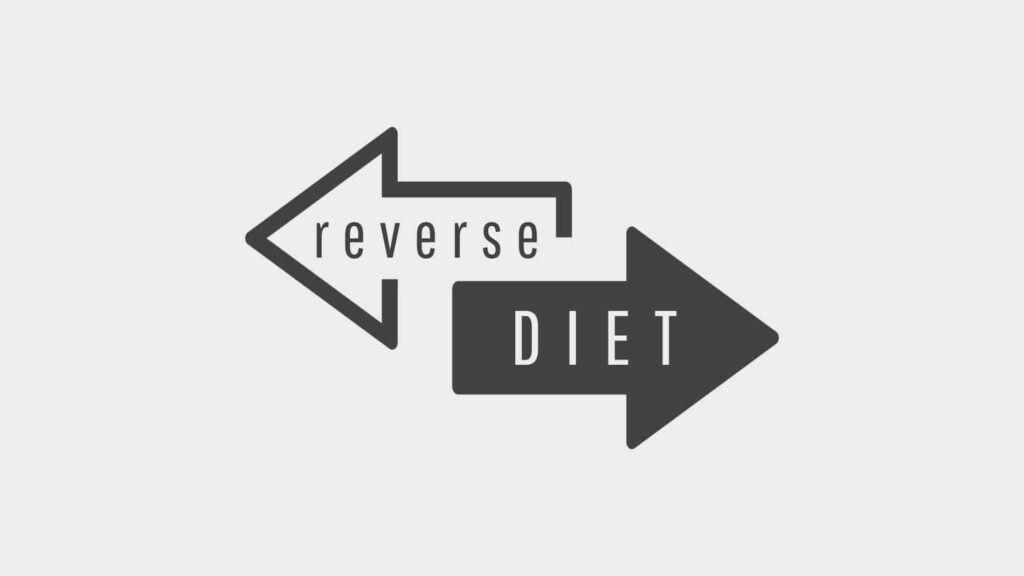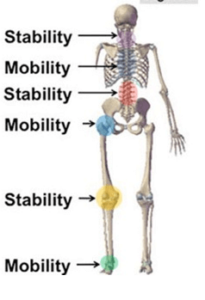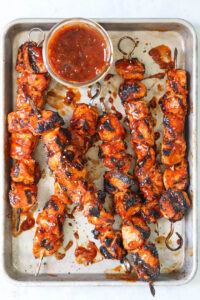When you’re starting a weight loss journey the basic idea is pretty simple: manage your calorie intake and move more often.
So, naturally, you start your diet by cutting some calories but that’s not always the best place to start your weight loss journey! In fact, most times you can benefit more from adding calories than by restricting your calories further.
For those with a history of crash dieting, severe calorie restriction, or multiple failed diet attempts; jumping on another diet probably isn’t going to yield the results you’re looking for and nine times out of ten will do more harm than good.
Once you go through repeated bouts of calorie restriction or if you’ve been through calorie restriction for a long period of time (>14 Weeks) without a diet break, your metabolism really takes a beating. When your body is in this state of restriction for too long it responds by reducing the number of calories you burn throughout the day in a process known as metabolic adaptation which can set you up for surprisingly rapid weight gain.
You can respond to this by cutting calories even further but you can only cut calories so low before you run out of options. Luckily, you can rival this adaptation with a process known as reverse dieting.
What Is Reverse Dieting?
Reverse dieting is pretty much exactly what it sounds like, dieting backwards. Instead of reducing calories over a period of time, you spend time increasing your calorie intake at a steady rate and even reducing cardio (if applicable).
So, simply put, it’s eating more and moving less with the goal of maintaining weight or losing weight without storing too much body fat. However, you need to be deliberate about your strategy here because adding too many calories too soon can lead to an increase in fat mass.
There are a few different strategies to take when it comes to starting a reverse diet and a few situations when a reverse diet becomes necessary but before we can even talk about those we need to better understand what metabolic adaptation is and how your body uses it.
Metabolic Adaptation
Metabolic adaptation is the process that your body takes to adapt to the changes in your calorie intake and environment so that your body can conserve energy to increase the likelihood of survival.
You see, your body has one real job above all else and that is to keep you alive. When you eat fewer calories your body doesn’t know you’re trying to lose fat, it just thinks there isn’t enough food around for it to survive. So in an effort to adapt to the environment, your body adapts by burning fewer calories so it can save energy.
This adaptation was really helpful for our ancestors that would face famine and droughts but not as useful now when we have a grocery store down the street and just want to lose some fat.
Although it doesn’t work in our favor, if our goal is fat loss, we can still work around it the better we understand how and why it happens. Metabolic adaptation can come in several forms including:
- Your organs consume fewer calories to perform the same functions
- Your heart beats slower as sympathetic nervous system activity declines
- Hormones that influence metabolism and appetite are adversely affected, including thyroid hormone, testosterone, leptin, and ghrelin
- You burn fewer calories through NEAT (walking, fidgeting, chores, etc)
- You use fewer calories to absorb and digest foods – usually because you’re eating less through calorie restriction
- Your muscles become more efficient and require less fuel for the same amount of work
- Your body has less total mass (duh, you lost weight) so you need fewer calories to maintain weight aka you burn fewer calories in BMR
All in all, these changes all lead to fewer total calories burned daily, both at rest and while moving! This doesn’t sound great, but luckily, metabolic adaptation isn’t one big downward spiral!

The same way that you can slow down your metabolism through regular dieting and calorie restriction, you can speed up your metabolism through reverse dieting – it’s actually the entire reason you would do one at all! So when do you know it’s time to start a reverse diet?
When Should You Reverse Diet?
There are a number of different situations where a reverse diet is going to be the right move for you.
Hit Your Fat Loss Goal – This is the most ideal situation. You just went through a diet and reached your goal, now you want to maintain this weight/physique but want to be able to eat more calories, that’s when reverse dieting comes in because you’re not going to want to stay at the calories that got you to your goals for too long.
Physiological Stress – This comes in several forms but basically you’re just not feeling optimal at all and your biofeedback shows it. You might experience this as having lots of cravings, a crazy appetite, no appetite, training performance is down, sleep is terrible, sex drive is low, you have no energy, you’re always sore, women could experience high symptom cycles or even loss of cycle entirely! If you’re experiencing any or several of these symptoms you might want to consider going on a reverse diet.
Hit A Plateau – If your biofeedback is fine but you’ve already cut calories super low, stayed consistent with your plan, and haven’t seen any kind of progress in 2-3 weeks then it’s probably a good time to consider hitting a reverse diet and getting back to maintenance for a period of time.
Regardless of which of these you might be experiencing the goal is the same: get you out of a calorie deficit and reverse diet you back up to your maintenance calorie intake. This is where your calorie intake is going to help you maintain the weight you’re at but more importantly than that, you’re going to feel your best at maintenance! Maintenance is when your body is at it’s healthiest and is thriving physiologically so we want to get back to that point.
How To Start A Reverse Diet?
Well just as the name implies, you’re going to do the reverse of your diet. So if you followed a smart periodized approach, like all of our clients do, you’ll basically just reverse all of the nutrition and activity adjustments you made to get to the end of the diet you’re at now until you’re back up at maintenance again.
Here’s the catch though, if you went through a fat loss or diet phase you’re likely a lighter, smaller person with less fat mass than when you started which means you experienced a good amount of metabolic adaptation – as we mentioned earlier.
That means that the maintenance level you started with is going to be different than the maintenance level that you need now! So we want to build back up to our new maintenance instead of our old maintenance. If you don’t shift your target to your new maintenance then you’re moving toward weight regain again which probably isn’t what you want. This is the most common problem that occurs when people jump into a reverse diet.
The first step for everyone going into a reverse diet will vary but typically you want to increase calories between 5-20% depending on the severity of your physiological stress (more symptoms = add more calories). This will have you feeling so much better almost immediately.
Once you do that, you slowly continue to add calories or remove calories to your diet in small increments and monitor how your body responds to it. There are typically 3 kinds of people when it comes to this.
Hyper-responders: These are the people we all want to be, but few are. Hyper-responders will see a fast drop in weight as soon as they add calories. If this is you, then you can add calories at a faster rate as you build up to maintenance.
Regular-responders: I’d say a majority of people will fall into this camp, you’ll add calories and see no change in your weight or physique for maybe a week or two and then see a drop, or you might not see a change at all and can continue to add calories until you do.
Hypo-responders: These are people that adapt a little slower and a little bump in caloreis can lead to an increase in weight. This isn’t a bad thing, your body will adapt and drop in weight soon enough but you will have to add calories at a slower rate as your body responds until you get to your maintenance to avoid gaining any excess fat.
It’s important to note, however, that every individual is just that – an individual, and as such will likely need a different process for their reverse than the other person. So while the basic idea of a reverse diet is to add calories, the specific strategies from person to person can vary greatly.

Things To Know Before Reverse Dieting
While we all want to be the hyper-responders that lose weight as soon as we add calories, we can’t be – and that’s ok! While we’d like the weight to go down or stay the same after the reverse diet, it’s normal (and expected) to gain 1-5 pounds as you go through your reverse diet. This doesn’t mean you did anything wrong, it’s just your body settling into its new normal. However, if you gain any more than that and you’re likely adding calories/reducing activity way too fast or aggressively and should probably slow down a bit.
It’s completely normal to see the scale jump up a little more while you reverse diet but this can have a huge mental toll on an individual, especially after spending so much time trying to bring the weight down. The mental and emotional aspect of a reverse is what makes reverse dieting so hard and that’s why I highly recommend doing a reverse diet with an experienced coach to make sure that you’re staying on track and not making any rash decisions that could impact your health or physique.
If you think you need a reverse diet and would like to learn a specific strategy to help you get there you can schedule a free strategy call with one of your coaches to help guide you in the right direction.
References:
- Rosenbaum, M., & Leibel, R. L. (2010). Adaptive thermogenesis in humans. International Journal of Obesity, 34, S47-S55.
- Levine, J. A. (2002). Non-exercise activity thermogenesis (NEAT). Best Practice & Research Clinical Endocrinology & Metabolism, 16(4), 679-702.
- Deriaz, O., Tremblay, A., & Bouchard, C. (1993). Non linear weight gain with long term overfeeding in man.Obesity Research, 1(3), 179-185.
- Fyfe, J. J., Bishop, D. J., & Stepto, N. K. (2014). Interference between concurrent resistance and endurance exercise: Molecular bases and the role of individual training variables. Sports Medicine, 44(6), 743-762.







